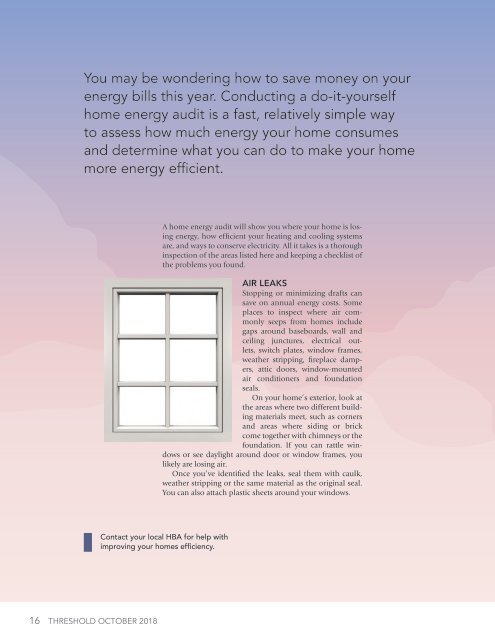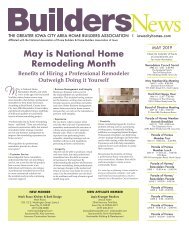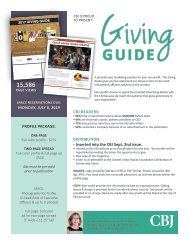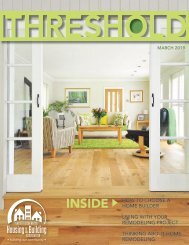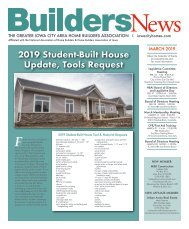Threshold Oct 2018
You also want an ePaper? Increase the reach of your titles
YUMPU automatically turns print PDFs into web optimized ePapers that Google loves.
You may be wondering how to save money on your<br />
energy bills this year. Conducting a do-it-yourself<br />
home energy audit is a fast, relatively simple way<br />
to assess how much energy your home consumes<br />
and determine what you can do to make your home<br />
more energy efficient.<br />
A home energy audit will show you where your home is losing<br />
energy, how efficient your heating and cooling systems<br />
are, and ways to conserve electricity. All it takes is a thorough<br />
inspection of the areas listed here and keeping a checklist of<br />
the problems you found.<br />
AIR LEAKS<br />
Stopping or minimizing drafts can<br />
save on annual energy costs. Some<br />
places to inspect where air commonly<br />
seeps from homes include<br />
gaps around baseboards, wall and<br />
ceiling junctures, electrical outlets,<br />
switch plates, window frames,<br />
weather stripping, fireplace dampers,<br />
attic doors, window-mounted<br />
air conditioners and foundation<br />
seals.<br />
On your home’s exterior, look at<br />
the areas where two different building<br />
materials meet, such as corners<br />
and areas where siding or brick<br />
come together with chimneys or the<br />
foundation. If you can rattle windows<br />
or see daylight around door or window frames, you<br />
likely are losing air.<br />
Once you’ve identified the leaks, seal them with caulk,<br />
weather stripping or the same material as the original seal.<br />
You can also attach plastic sheets around your windows.<br />
Contact your local HBA for help with<br />
improving your homes efficiency.<br />
16 THRESHOLD OCTOBER <strong>2018</strong>


